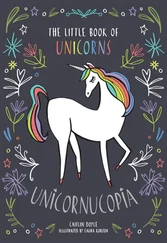Rob Doyle - This is the Ritual
Здесь есть возможность читать онлайн «Rob Doyle - This is the Ritual» весь текст электронной книги совершенно бесплатно (целиком полную версию без сокращений). В некоторых случаях можно слушать аудио, скачать через торрент в формате fb2 и присутствует краткое содержание. Год выпуска: 2016, Издательство: Bloomsbury Publishing, Жанр: Современная проза, на английском языке. Описание произведения, (предисловие) а так же отзывы посетителей доступны на портале библиотеки ЛибКат.
- Название:This is the Ritual
- Автор:
- Издательство:Bloomsbury Publishing
- Жанр:
- Год:2016
- ISBN:нет данных
- Рейтинг книги:5 / 5. Голосов: 1
-
Избранное:Добавить в избранное
- Отзывы:
-
Ваша оценка:
- 100
- 1
- 2
- 3
- 4
- 5
This is the Ritual: краткое содержание, описание и аннотация
Предлагаем к чтению аннотацию, описание, краткое содержание или предисловие (зависит от того, что написал сам автор книги «This is the Ritual»). Если вы не нашли необходимую информацию о книге — напишите в комментариях, мы постараемся отыскать её.
This is the Ritual — читать онлайн бесплатно полную книгу (весь текст) целиком
Ниже представлен текст книги, разбитый по страницам. Система сохранения места последней прочитанной страницы, позволяет с удобством читать онлайн бесплатно книгу «This is the Ritual», без необходимости каждый раз заново искать на чём Вы остановились. Поставьте закладку, и сможете в любой момент перейти на страницу, на которой закончили чтение.
Интервал:
Закладка:
A woman in her fifties named Silvia Bresson-Levaint, the childless wife of a respected theatre director, developed a particular fondness for Passolet. They became close friends, and the Bresson-Levaints would invite Passolet to spend periods at their summer house on the shore of Lake Annecy, at the foot of the French Alps. It is there that Madame Bresson-Levaint encouraged the young Jean-Pierre to write. He had, in fact, been writing for several years, without any real direction or thought of publishing. ‘I wrote from the right-brain,’ he later recalled. ‘That is, from the dream-channel, the imagistic source into which one descends after falling asleep. . What I wrote was shit, really, but it was the beginning, the scratchings at a surface I would spend decades excavating.’
Silvia Bresson-Levaint was the kind of woman who might have run a literary salon in an earlier era; she had many friends who were writers and artists, having earned a Master’s at the Sorbonne and considered a career in academia before getting married. Jean-Pierre would accompany Silvia on walks along the shores of the lake, during which they would passionately discuss Schopenhauer, whose evocations of the suffering that coursed through existence resonated so profoundly with the young man. Madame Bresson-Levaint perceived in her friend an intelligence, a depth of feeling and a dexterity with words which she knew was rare and worth cultivating. She urged him to set down his insights with greater discipline and purpose.
Passolet had never told Madame Bresson-Levaint, nor anyone else, about the abuse he had endured years earlier. The memories of rape and violence still tormented him, triggering panic attacks so severe he had once tried to kill himself by hacking into his wrists. After an April day spent walking in the Alpine foothills, Passolet came to pieces while sitting by the fireplace with Madame Bresson-Levaint. ‘It was as if a dam had burst inside of me,’ he wrote, ‘blown apart by the shock of a happiness that had asked nothing of me, had concealed nothing from me, and which therefore I found unbearable.’ He unburdened himself of his past, and Silvia listened, distraught, while cradling the young man to her breast. The next day, having discussed the matter with her husband, she offered to let Jean-Pierre stay on at the lake house for as long as need be, so that he might try to confront or transmute his suffering, perhaps by shaping a book from his experiences. (The Bresson-Levaints had little faith in psychoanalysis, or psychotherapy in general, despite Silvia’s friendship with Jacques Lacan. Previously, the couple had seen a close friend, a certain Madame Ducroix, kill herself with pills and wine despite years of intensive and costly analysis.)
Passolet, who was twenty-two and otherwise without direction, accepted the offer. He lived by the lake for a year, alone but for the domestic employee, a thirty-year-old Algerian woman named Celine Begadour, and frequent visits by Madame Bresson-Levaint. The house was well-stocked with literature, and Silvia would bring books from Paris which she felt would inspire Passolet. He read La Rochefoucauld, La Bruyère and the moralists; the essays of Montaigne (which moved him almost as much as Schopenhauer had); Proust; Pascal; Hegel; Sarraute and the nouveaux romanciers ; the Sufi poets; the Gnostic scriptures of Nag Hammadi; almost the entirety of Freud, and much else besides. ‘Most of the real reading I have done in my life, I did during that year,’he later claimed. He wrote each morning, and walked for hours by the lake and into the nearby forest, immersed in himself.
Although Madame Bresson-Levaint expected that he would use this period to write some kind of memoir or autobiographical novel, the book that was born of that solitary year turned out to be something very different. Set in an unnamed, mist-enshrouded country during a time of war, and populated by characters who appear and then drop out again without logic or pattern, only to reappear with different names and personalities, Cities in Crystal is one of the few novels I know deserving of that much-overused epithet, ‘dreamlike’. It is also a singularly menacing read: although no violence or horror is depicted directly, it is impossible not to sense, on almost every page, the proximity of an intense, brooding malevolence. The elusive narrative is haunted by the presence of a beautiful, dark-haired woman with lines on her face suggesting a hard life and a fierce character. I had read in one of Passolet’s interviews that, although this figure was undoubtedly an avatar of Celine, the woman who came each morning to cook and clean for him, and though he was, in fact, in love with Celine, he remained ignorant of either circumstance until long after the book had been published. ‘Celine walked into my writing the same way she walked into my unconscious: quietly and unnoticed,’ he said. In the novel’s inexplicable final scene, the human characters all transform into birds — sparrows, hawks, peregrines and ravens — and fly together into the sky, ascending through the earth’s atmosphere, dissolving finally in the beyond.
After a year, Passolet returned to Paris with the typescript of his first novel in his briefcase. It was not difficult for Silvia Bresson-Levaint to persuade a publisher friend to accept it. The book was a modest success and, with the royalties, Passolet rented a small studio apartment on the rue Garancière, near to the Jardin du Luxembourg, where he liked to take walks early in the morning. Though he had gained confidence since the publication, Passolet’s success did not spell an end to his psychological turmoil. That winter, while working on an early draft of what would, almost a decade later, become his most famous book, Heaven , he suffered a crisis more severe than any that had gone before. After a volley of desperate, barely coherent letters and phone calls to his friends — though not, oddly, to Silvia Bresson-Levaint — Passolet disappeared. Unable to contact him, his friends (he had long been estranged from his mother and elder brother) had little choice but to believe he was dead, most likely by his own hand.
The truth was only marginally less unpleasant. Deranged by memories that assailed him now with greater virulence than ever, a dishevelled, unshaven Passolet wandered France for several months, sleeping rough, or in dosshouses patronised by alcoholics and low-lifes. Several times he was taken in by the police and spent the night in a cell. He entered numerous psychiatric institutions, staying for as long as a month before checking himself out to wander once more without aim or destination. He relapsed into alcoholism as he drifted further beyond the limits of respectable society. At one point, he found himself staying amid a community of gypsies who were travelling slowly across the rural north of France. The gypsies tolerated him, for a few days at least, due to the wine he shared, bought with his now-dwindling royalties. One of the gypsies, a mustachioed and sullen man who held a certain status in the camp, and wore a white vest that he never seemed to change, became the object of Passolet’s intense fixation. Every day, Passolet would watch him furtively, initially having no idea why the man exerted such fascin-ation. Then the answer came to him: this man was the tormentor of Passolet’s youth, the boyfriend of his mother who had sexually abused him so many years ago. It didn’t matter that the gypsy looked nothing like the abusive boyfriend, nor that there would have been a huge difference in their respective ages: Passolet knew it was him, either in a cunning disguise, or altered due to some other whim or sorcery. This insane notion, which Passolet felt with the force of a holy revelation, left him terrified. He wept that night as he lay under a few rags in a clearing between two caravans, appalled by the injustice of having his tormentor reappear in his life, no doubt poised to inflict yet more misery on him. But then Passolet hardened, willing his tears to cease. Now was not the time for weakness and self-pity, but for manliness and bloody vengeance. Passolet would prove that his role in life was not that of a mere victim: he decided he would murder the gypsy. The next morning, he stole a heavy knife and concealed it in his trousers. He knew that the gypsy slept in the furthest caravan out from the road, along with his wife and three of his children. Passolet would enter the caravan while the gypsy slept, and plunge the knife into his neck. If the wife or children tried to stop him, he would slaughter them as well. Then, either the other gypsies would lynch him, or he would slash his own throat before they had the chance. Passolet was surprised by how calm he felt, now that the intention was fixed. That night, however, having drifted off while awaiting the optimal moment to carry out the murderous act, he awoke in aghast lucidity: he knew his plan was madness; the gypsy had nothing to do with him; he had never even set eyes on him before arriving at the camp.
Читать дальшеИнтервал:
Закладка:
Похожие книги на «This is the Ritual»
Представляем Вашему вниманию похожие книги на «This is the Ritual» списком для выбора. Мы отобрали схожую по названию и смыслу литературу в надежде предоставить читателям больше вариантов отыскать новые, интересные, ещё непрочитанные произведения.
Обсуждение, отзывы о книге «This is the Ritual» и просто собственные мнения читателей. Оставьте ваши комментарии, напишите, что Вы думаете о произведении, его смысле или главных героях. Укажите что конкретно понравилось, а что нет, и почему Вы так считаете.












